مقدمة
الحفارات ذات الثمان طن هي آلات متوسطة الحجم شائعة في العديد من مواقع البناء. إنها توفر توازنًا جيدًا بين القوة والكفاءة والقدرة على المناورة لحفر الخنادق وتحميل الشاحنات وهدم الهياكل ومهام تحريك التربة المختلفة. ومع ذلك، مثل أي قطعة من الآلات الثقيلة، يمكن للحفارات 8 طن أن تصاب بالعيوب وتتطلب إصلاحات بمرور الوقت. ستوفر هذه المقالة نظرة عامة شاملة على المشكلات الشائعة التي قد تواجهها مع الحفار 8 طن وكيفية إصلاحها بشكل صحيح.
مشاكل متكررة في المحرك والهيدروليك
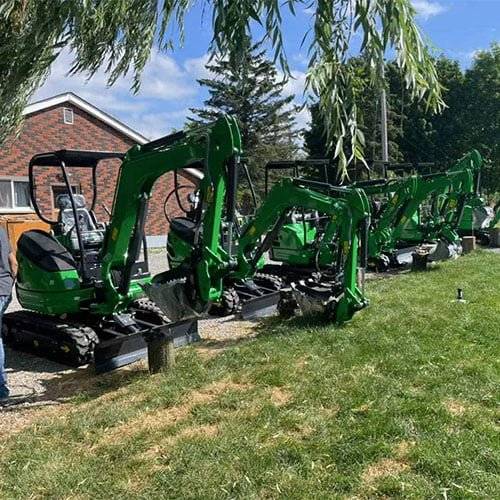
يُعدّ المحرك والأنظمة الهيدروليكية جوهر حفارة 8 أطنان. تحتوي هذه المكونات المعقدة على العديد من الأجزاء التي تتآكل وقد تتعطل مع مرور سنوات من الاستخدام. فيما يلي بعض أعطال المحرك والأنظمة الهيدروليكية الأكثر شيوعًا في حفارات 8 أطنان وإجراءات إصلاحها الموصى بها:
ارتفاع درجة حرارة المحرك
- الأسباب: انخفاض مستوى سائل التبريد/مضاد التجمد، عطل في مضخة المياه، انسداد زعانف المبرد، فشل منظم الحرارة
- الحلول: قم بتعبئة سائل التبريد، واختبار تشغيل مضخة المياه، وتنظيف زعانف المبرد بالضغط، واستبدال منظم الحرارة
قوة المحرك منخفضة
- الأسباب: فلتر الهواء المسدود، الوقود الملوث/القديم، الحاقنات المعيبة، مشاكل الضغط
- الحلول: استبدال فلتر الهواء، وتصريف نظام الوقود وإعادة ملئه بالوقود الجديد، واختبار/استبدال حاقنات الوقود، واختبار ضغط المحرك
تسرب مضخة هيدروليكية
- الأسباب: تآكل أختام عمود المضخة، تلف غلاف المضخة
- الحلول: استبدال أختام العمود، أو إعادة بناء المضخة الهيدروليكية أو استبدالها
حركة بطيئة/متقطعة أو ذراع
- الأسباب: انخفاض السائل الهيدروليكي، والخراطيم المقيدة، وصمامات التحكم التالفة
- الحلول: قم بملء خزان الهيدروليك، وفحص الخراطيم والتجهيزات بحثًا عن أي انسدادات، واختبار صمامات التحكم التالفة واستبدالها
الجدول 1. أعطال المحرك والهيدروليك الشائعة وحلولها
| عيب | الأسباب المحتملة | حلول |
|---|---|---|
| ارتفاع درجة حرارة المحرك | انخفاض مستوى سائل التبريد/مضاد التجمد، مضخة مياه معيبة، زعانف المبرد مسدودة، منظم حرارة معطل | قم بتعبئة سائل التبريد، واختبار تشغيل مضخة المياه، وتنظيف زعانف المبرد بالضغط، واستبدال منظم الحرارة |
| قوة المحرك منخفضة | فلتر هواء مسدود، وقود ملوث/قديم، حاقنات معيبة، مشاكل في الضغط | استبدال فلتر الهواء، وتصريف نظام الوقود وإعادة ملئه بالوقود الجديد، واختبار/استبدال حاقنات الوقود، واختبار ضغط المحرك |
| تسرب مضخة هيدروليكية | أختام عمود المضخة مهترئة، غلاف المضخة تالف | استبدال أختام العمود، أو إعادة بناء المضخة الهيدروليكية أو استبدالها |
| حركة بطيئة/متقطعة أو ذراع | انخفاض مستوى السائل الهيدروليكي، والخراطيم المقيدة، وصمامات التحكم التالفة | قم بملء خزان الهيدروليك، وفحص الخراطيم والتجهيزات بحثًا عن أي انسدادات، واختبار صمامات التحكم التالفة واستبدالها |
أعطال كهربائية وأعطال أجهزة الاستشعار المزعجة
تُعد الأعطال الكهربائية وتعطل أجهزة الاستشعار من المشاكل الشائعة والمزعجة في الحفارات. قد تؤدي التوصيلات المتآكلة والأسلاك التالفة وأجهزة الاستشعار المعطلة إلى توقف مؤقت في الأداء أو حتى تعطيل الآلة تمامًا. ركّز على المشاكل والاختبارات الرئيسية التالية عند استكشاف الأعطال الكهربائية في حفارات 8 أطنان وإصلاحها:
فشل تشغيل الجهاز
- الأسباب: بطارية فارغة أو تالفة، فشل محرك التشغيل، مفتاح الإشعال المعيب
- الحلول: إعادة شحن/استبدال البطارية، اختبار سحب أمبير محرك التشغيل، تجاوز مفتاح الإشعال للاختبار
لوحة العرض والأضواء لا تعمل
- الأسباب: انفجار المصهر، تلف حزمة الأسلاك، فشل المفتاح أو التتابع
- الحلول: فحص الصمامات، وفحص الأسلاك بحثًا عن أي كسر أو تآكل، واستخدام مقياس متعدد لاختبار المفاتيح والمرحلات
أجهزة الاستشعار تعطي قراءات خاطئة
- الأسباب: أسلاك المستشعر غير محكمة، أو فشل المستشعر، أو مشكلة في معايرة البرنامج
- الحلول: فحص المقابس والأسلاك الخاصة بالمستشعر، واختبار مقاومة/إخراج المستشعر، وإعادة معايرة البرنامج
الجدول 2. المشاكل الكهربائية والمستشعرات الرئيسية وخطوات استكشاف الأخطاء وإصلاحها
| عيب | الأسباب المحتملة | حلول |
|---|---|---|
| فشل تشغيل الجهاز | بطارية فارغة أو تالفة، فشل محرك التشغيل، مفتاح الإشعال معيب | إعادة شحن/استبدال البطارية، اختبار سحب أمبير محرك التشغيل، تجاوز مفتاح الإشعال للاختبار |
| لوحة العرض والأضواء لا تعمل | فتيل منفوخ، حزمة أسلاك تالفة، مفتاح أو مرحل معطل | فحص الصمامات، وفحص الأسلاك بحثًا عن أي كسر أو تآكل، واستخدام مقياس متعدد لاختبار المفاتيح والمرحلات |
| أجهزة الاستشعار تعطي قراءات خاطئة | أسلاك المستشعر مفكوكة، أو مستشعر معطل، أو مشكلة في معايرة البرنامج | فحص المقابس والأسلاك الخاصة بالمستشعر، واختبار مقاومة/إخراج المستشعر، وإعادة معايرة البرنامج |
مشاكل شائعة في مجموعة نقل الحركة
يمكن أن تُؤثر مشاكل نظام نقل الحركة، بما في ذلك المسارات، وناقلات الحركة النهائية، والبكرات، وناقلات التباطؤ، وقوابض التوجيه، سلبًا على قدرة الحركة بشكل كبير. تؤدي الأجزاء المفككة أو المتآكلة بشدة هنا إلى مزيد من التلف إذا لم تُصلح على الفور. انتبه لأعطال نظام نقل الحركة الرئيسية التالية:
صرير المعدن على المعدن من المحركات النهائية
- الأسباب: انخفاض مستوى الزيت، تلف التروس
- الحلول: قم بتعبئة زيت المحرك النهائي، وفحص التروس التالفة واستبدالها
حركة المسار الثابتة أو البطيئة
*الأسباب: فشل هيدروليكي، محرك المسار المعيب، مكونات الجر المكسورة/المفككة
- الحلول: فحص مكونات المسار الهيدروليكي، واختبار محرك المسار، وربط/استبدال أجزاء المسار المكسورة
تسرب الزيت من المحركات النهائية أو بكرات المسار
- الأسباب: تلف الأختام، وتشقق الغلاف، والتركيبات الفضفاضة
- الحلول: استبدال الأختام، إعادة بناء/استبدال المكونات المتسربة، إحكام التركيبات
الجدول 3. أخطاء نظام نقل الحركة الشائعة ونصائح استكشاف الأخطاء وإصلاحها
| عيب | الأسباب المحتملة | حلول |
|---|---|---|
| صرير المعدن على المعدن من المحركات النهائية | انخفاض مستوى الزيت، تروس تالفة | قم بتعبئة زيت المحرك النهائي، وفحص التروس التالفة واستبدالها |
| حركة المسار الثابتة أو البطيئة | عطل هيدروليكي، محرك المسار معيب، مكونات الجر مفكوكة/مكسورة | فحص مكونات المسار الهيدروليكي، واختبار محرك المسار، وشد/استبدال أجزاء المسار المكسورة |
| تسرب الزيت من المحركات النهائية أو بكرات المسار | أختام تالفة، غلاف متصدع، تركيبات فضفاضة | استبدال الأختام، وإعادة بناء/استبدال المكونات المتسربة، وشد التركيبات |
الأضرار الهيكلية والتآكل العام
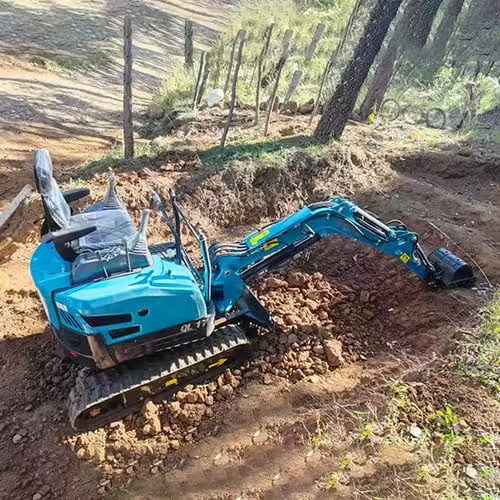
يتعرض هيكل الحفارات لتلف مستمر نتيجة ملامسته للأسطح الصلبة والأحمال الثقيلة والحطام. لذا، يُعدّ فحص الشقوق والأضرار وإصلاحها وقائيًا أمرًا بالغ الأهمية. وبالمثل، تتطلب بطانات المحور البالية إعادة بناء أو استبدال قبل أن يتسبب المزيد من الانحراف في إتلاف المثبتات والأسطوانات والأنابيب.
اللحامات المتشققة للذراع أو الذراع
- الأسباب: شقوق التعب الناتجة عن التحميل/الصدمات المتكررة
- الحلول: حفر الشقوق وإعادة لحامها، وتعزيز المناطق المعرضة للشقوق
اللعب المفرط في محاور الرافعة والذراع
- الأسباب: البطانات البالية
- الحلول: قياس خلوص البطانات وإعادة بناء/استبدال البطانات البالية
زجاج الكابينة تالف مع مشاكل في الرؤية
- الأسباب: آثار الحطام الناتجة عن عمليات مناولة المواد
- الحلول: استبدال الزجاج المتصدع أو التالف
الجدول 4. العيوب الهيكلية والإصلاحات
| عيب | الأسباب المحتملة | حلول |
|---|---|---|
| اللحامات المتشققة للذراع أو الذراع | شقوق التعب الناتجة عن التحميل/الصدمات المتكررة | حفر الشقوق وإعادة لحامها، وتعزيز المناطق المعرضة للشقوق |
| اللعب المفرط في محاور الرافعة والذراع | البطانات البالية | قياس خلوص البطانات وإعادة بناء/استبدال البطانات البالية |
| زجاج الكابينة تالف مع مشاكل في الرؤية | آثار الحطام الناتجة عن عمليات مناولة المواد | استبدال الزجاج المتصدع أو التالف |
النتيجة: حفارة 8 طن
يُعدّ اكتشاف المشاكل مبكرًا وإجراء الصيانة الوقائية أمرًا بالغ الأهمية لزيادة وقت التشغيل وتجنب الإصلاحات الكبرى لاحقًا. استخدم نظرة عامة على الأعطال والإصلاحات المُقدمة للمحركات والأنظمة الهيدروليكية والكهربائية وأنظمة الدفع والهياكل كدليل عند ظهور أي مشاكل في حفارتك التي يبلغ وزنها 8 أطنان. تواصل مع فنيين مؤهلين إذا كانت الإصلاحات تتجاوز قدراتك. كما أن الاستثمار في عمليات فحص الصيانة الدورية واستبدال الأجزاء البالية قبل تفاقمها سيقلل من المشاكل من خلال اكتشاف المشاكل قبل أن تتفاقم وتتحول إلى مشاكل أكبر. يعتمد عمر حفارتك وأدائها بشكل كبير على استباق الأعطال الشائعة.
التعليمات
س: ما هي الأسباب الأكثر شيوعًا للتسربات في الخزانات سعة 8 أطنان؟ حفارات?
ج: يُعد النظام الهيدروليكي المصدر الأكثر شيوعًا للتسربات. ومن الأسباب الشائعة تآكل أختام المضخة الهيدروليكية، وتلف خراطيم/وصلات الهيدروليك، والتسربات حول الأسطوانات الهيدروليكية. كما يمكن أن يتسرب المحرك من الأختام والحشيات، وربما من المبرد وخطوط الوقود.
س: لماذا قد أشعر أحيانًا بأن مسارات الحفارات الخاصة بي فضفاضة أو تصدر أصوات نقر عالية؟
ج: يشير هذا عادةً إلى تلف أو تآكل المسامير أو البطانات أو المحامل في مكونات الهيكل السفلي، مثل البكرات، وعجلات التباطؤ، والعجلات المسننة. كما قد تُسبب أجزاء الجر المفككة أو المكسورة ضوضاءً وتشعرك بالارتخاء. يلزم فحص دقيق واستبدال الأجزاء التالفة.
س: ماذا يجب أن أفعل إذا لم تتمكن الحفارة الخاصة بي من الدوران بشكل صحيح؟
ج: عادةً ما يكون سبب الدوران المحدود عطلًا في نظام دفع التأرجح. ابدأ بالتحقق من وجود مشاكل مثل انخفاض مستوى الزيت، أو تلف أسنان تروس التأرجح، أو تصلب المحامل، أو مشاكل في محرك التأرجح. يجب أيضًا فحص شحم ومسامير محمل الدوران للتأكد من تشحيمها وعزم دورانها بشكل كافٍ.
س: ما هي أدوات التشخيص المفيدة عند استكشاف أخطاء الحفارات وإصلاحها؟
ج: تشمل أدوات التشخيص الأساسية أجهزة القياس المتعددة لاختبار الدوائر الكهربائية، ومقاييس الضغط للأنظمة الهيدروليكية، وماسحات حاسوبية للمحركات، ومسدسات الشحم لتحليل التزييت، ومقاييس الحرارة بالأشعة تحت الحمراء لتحديد المكونات التي ترتفع حرارتها، وأضواء ستروب لفحص الأجزاء الدوارة. كما يُعدّ وجود أدلة الصيانة والمخططات أمرًا بالغ الأهمية.

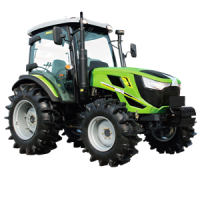
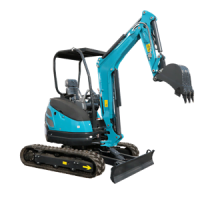
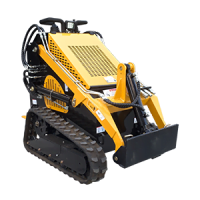

-1.png)